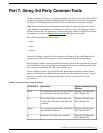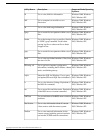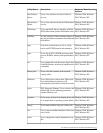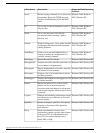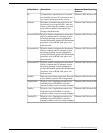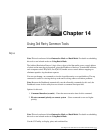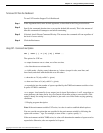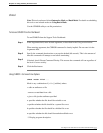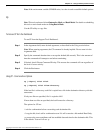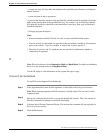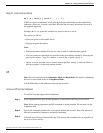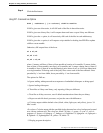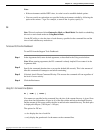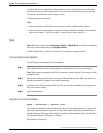
To Access CAT from the Dashboard
To run CAT from the Support Tools Dashboard:
Step 1
In the Arguments field, enter desired arguments, as described in the Using section below.
Step 2
Specify the command duration time or accept the default (60 seconds). This is the amount of
time the command will attempt to run before terminating.
Step 3
If desired, check Elevate Command Priority. This ensures the command will run regardless of
the level of server activity.
Step 4
Click the Run button.
Using CAT - Command Line Options
cat [ -usx? ] [ -v [-t] [-e] ] file1 ...
The options for CAT are:
-u: output characters one at a time, not a line at a time.
-s: be silent about non-existent files.
-v: visible mode - display control characters as ^<char> (except for tabs, new-lines, and
form-feeds) and chars with the 8th bit set as M-<char>.
-t: show tabs as ^I (only valid if -v given).
-e: show new-lines as $ (only valid if -v given).
-x: expand tabs into the number of spaces specified by the TABS environment variable or into
8 spaces if TABS is undefined.
-n: no output - don't actually do any output, just do input. Equivalent to '> null', except that on
some platforms, the latter can be very slow (much slower than writing to an actual file.) This
option is handy for seeing how long it takes to just read a set of files under varying operating
conditions.
-?: Display program description.
Note: If the environment variable CAT exists, its value is used to establish default options.
You can override an option that was specified in the environment variable by following the
option with a minus '-' sign. For example, to turn off the -v option, specify -v-.
If the environment variable TABS exists, its value will determine the number of spaces used to
expand tabs. Otherwise, tabs are expanded to 8 spaces.
Cisco Support Tools User Guide for Cisco Unified Software Release 2.1(1)
200
Chapter 14: - Using 3rd Party Common Tools
cat




